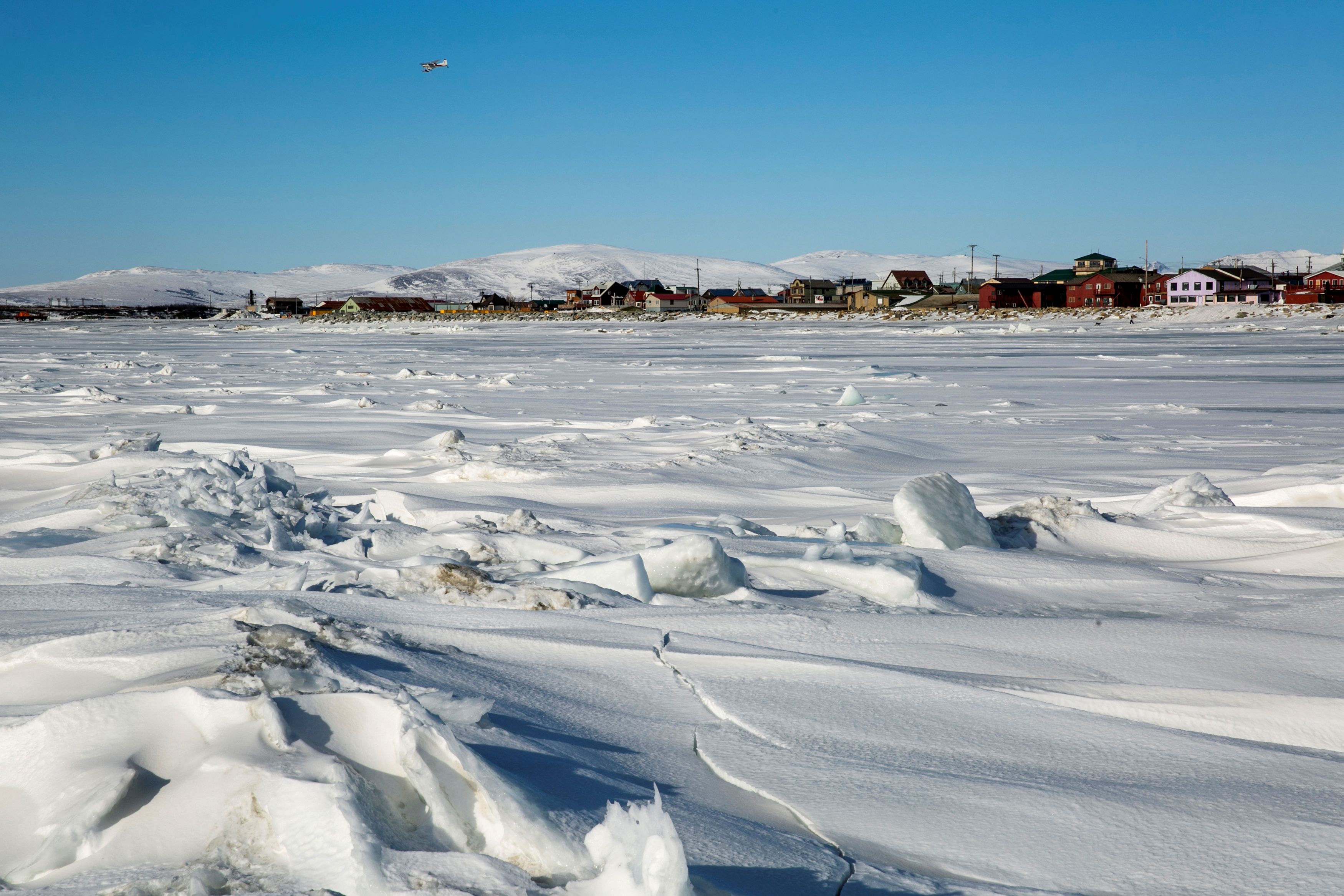Indigenous voices in this year’s Arctic Report Card explain the human impacts of Bering Sea upheaval
It's the first time the report card has included direct contributions from the Arctic's Indigenous residents.

In the communities around the Bering Sea, ice has long regulated the ecosystem, supporting food sources, food-gathering practices and traditional ways of life.
Now that the Bering Sea is in the acute throes of climate change and rapidly losing its ice, those age-old traditions are being upended, an Alaska Native leader said at a Tuesday news conference where the National Oceanic and Atmospheric Administration unveiled its annual Arctic Report Card.
[The past six years have all been the hottest on record in the Arctic]
“The sea ice and the snow helps us maintain our indigenous way of life,” said Mellisa Johnson, executive director of the Bering Sea Elders Group, a tribal organization.
“With that being taken away each year, and with the last three years taken away significantly, we haven’t had the opportunity as the past to continue having vast amounts of our seal, walrus, our fish and even our land resources,” such as berries and greens, said Johnson, who is an Inupiat from Nome.
This year’s Arctic Report Card, the 14th issued by NOAA, features a first — direct reporting from Indigenous people of the Arctic. This year, one of the 12 chapters was written by members of the Bering Sea Elders Group, which represents 39 Yupik and Inupiat tribes from the Yukon-Kuskokwim Delta of southwestern Alaska to the Little Diomede Island in center of the Bering Strait
Also a first was Johnson’s prominent place at the podium of the news conference held at the annual meeting in San Francisco of the American Geophysical Union.
Bering Sea ice hit record lows in the past two winters, thanks to midwinter meltdowns. The absence of ice in the Bering and the connected loss of ice in the Chukchi Sea north of the Bering Strait — linked directly to human-caused climate change — has had cascading effects, as described by in the Arctic Report Card.
Among them are much warmer-than-normal water temperatures, large-scale die-offs of birds and marine mammals, the northward migration of predatory fish that are normally in the southern Bering Sea, salmon die-offs in overheated streams in the northern Bering Sea region, extended hot summer weather on land and open waters in winter that unleashed storm surges and floods that were previously unheard of in a season that used to have reliable freeze.
Johnson and Jerry Ivanoff, a fisherman and Inupiat leader from Unalakleet, were at the AGU news conference to explain how Indigenous people are coming face-to-face with those changes.
Seals that are harvested by village hunters, for example, are in poorer body condition, Johnson said. “The fat content is significantly less, which means that’s less seal oil that we utilize for another food source,” she said.
As boreal species like Pacific cod and pollock move north, they disrupt other traditional food supplies in the water, Ivanoff said. Crab harvesters in Norton Sound took a big hit this year, he said.
“Our king crabbers were only getting half the resource because we were 7 to 15 degrees warmer and the crab didn’t come in where they normally come,” he said. “So it’s changing the migration of our resources that we depend on. And it’s definitely going to hit us right here on stuff that we like to eat.”
With the important Bering Sea ecosystem reeling from extreme climate change, it stands out from other parts of the Far North, said Matthew Druckenmiller of National Snow and Ice Data Center. Consequently, the Arctic Report Card put special emphasis on the Bering Sea and the connected Chukchi Sea, said Druckenmiller, one of the lead editors of the document.
Scientists who worked on the Arctic Report Card decided that it was important to get the message directly from the Indigenous people who know the region best, beyond relaying indigenous viewpoints indirectly, he said. The desire to bring in more Indigenous voices has been growing over several years, and the pieces came together this time, he said.
“This year just seemed like the right time to take that step because of the dramatic changes in the Bering Sea,” he said.
Representatives of the Bering Sea Elders Group drafted their chapter after holding a workshop in September in Nome.
The chapter mentions some adjustments that the region’s people are making. Because there is now more rain — and because traditional ways of predicting weather have been undermined — people are erecting roofs to shelter fish-drying racks, the chapter said. And because of increased erosion on permafrost-laden shorelines, young people are being encouraged to build their homes on higher ground, it says.
But there are some complex challenges posed by the change from eight months of ice presence to less than half of that amount of time, the chapter says. Among them is the expanded ship traffic and the northward spread of industrial-scale commercial fishing to follow the northward movement of fish stocks. Those changes are “only more likely to further stress our Bering Sea ecosystem,” the chapter says.
In future years, Druckenmiller said, scientists hope to include other Indigenous voices in the Arctic Report Card.
For now, the focus is on the Bering Sea’s people. Johnson, Ivanoff and perhaps at least one other will be speaking further on Indigenous viewpoints of the region’s rapid change at an AGU town hall event scheduled for Thursday, he said.